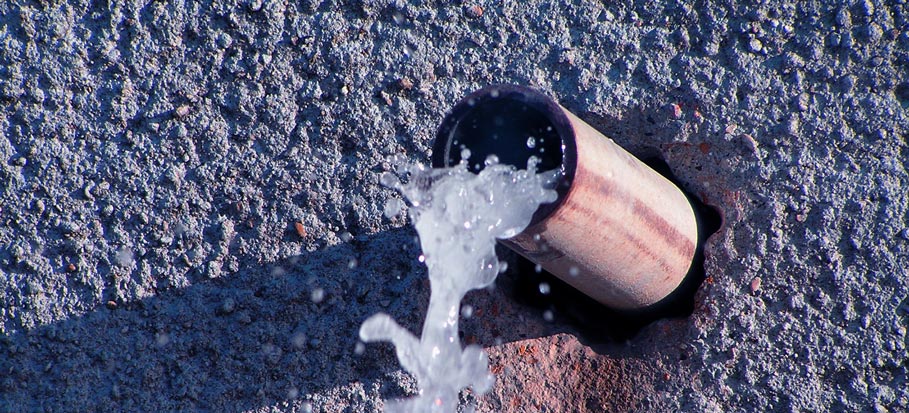Overview To Water Leak Discovery In The House
Overview To Water Leak Discovery In The House
Blog Article
We have found the article involving Locating water leaks listed below on the internet and thought it made good sense to discuss it with you here.
.jpg)
Early discovery of dripping water lines can reduce a potential disaster. Some little water leakages may not be visible.
1. Take A Look At the Water Meter
Every home has a water meter. Checking it is a surefire manner in which aids you discover leaks. For starters, switch off all the water sources. Make certain no person will purge, use the tap, shower, run the cleaning maker or dishwasher. From there, go to the meter and watch if it will transform. Since no one is using it, there need to be no activities. If it relocates, that suggests a fast-moving leak. If you identify no adjustments, wait an hour or two as well as inspect back once again. This means you may have a slow leak that could even be below ground.
2. Inspect Water Intake
Evaluate your water costs and also track your water consumption. As the one paying it, you must notice if there are any kind of inconsistencies. If you detect sudden changes, in spite of your intake coinciding, it implies that you have leaks in your plumbing system. Keep in mind, your water expense need to drop under the same variety every month. An unexpected spike in your bill shows a fast-moving leak.
At the same time, a consistent increase every month, despite having the very same habits, reveals you have a slow-moving leak that's also slowly rising. Call a plumber to thoroughly examine your building, particularly if you feel a warm location on your floor with piping beneath.
3. Do a Food Coloring Test
When it comes to water intake, 30% comes from toilets. If the color somehow infiltrates your bowl throughout that time without flushing, there's a leakage in between the storage tank and also bowl.
4. Asses Outside Lines
Don't fail to remember to check your outdoor water lines also. Must water permeate out of the link, you have a loosened rubber gasket. One little leak can throw away bunches of water as well as surge your water bill.
5. Analyze the circumstance and also examine
Property owners should make it a habit to check under the sink counters and even inside closets for any bad odor or mold and mildew growth. These two warnings suggest a leak so prompt focus is needed. Doing routine evaluations, even bi-annually, can conserve you from a major trouble.
Much more significantly, if you recognize your house is already old, maintain a watchful eye on your heating systems, tubes, pipes and so on. Check for stainings and deteriorating as a lot of pipes and home appliances have a life span. They will likewise naturally weaken because of deterioration. Do not wait for it to rise if you think dripping water lines in your plumbing system. Call a professional plumber right away so you don't end up with a terrible mess in your house.
Early detection of dripping water lines can minimize a possible calamity. Some little water leakages might not be noticeable. Inspecting it is a guaranteed means that aids you discover leaks. One small leakage can squander tons of water as well as spike your water bill.
If you believe leaking water lines in your plumbing system, don't wait for it to escalate.
WARNING SIGNS OF WATER LEAKAGE BEHIND THE WALL
PERSISTENT MUSTY ODORS
As water slowly drips from a leaky pipe inside the wall, flooring and sheetrock stay damp and develop an odor similar to wet cardboard. It generates a musty smell that can help you find hidden leaks.
MOLD IN UNUSUAL AREAS
Mold usually grows in wet areas like kitchens, baths and laundry rooms. If you spot the stuff on walls or baseboards in other rooms of the house, it’s a good indicator of undetected water leaks.
STAINS THAT GROW
When mold thrives around a leaky pipe, it sometimes takes hold on the inside surface of the affected wall. A growing stain on otherwise clean sheetrock is often your sign of a hidden plumbing problem.
PEELING OR BUBBLING WALLPAPER / PAINT
This clue is easy to miss in rooms that don’t get much use. When you see wallpaper separating along seams or paint bubbling or flaking off the wall, blame sheetrock that stays wet because of an undetected leak.
BUCKLED CEILINGS AND STAINED FLOORS
If ceilings or floors in bathrooms, kitchens or laundry areas develop structural problems, don’t rule out constant damp inside the walls. Wet sheetrock can affect adjacent framing, flooring and ceilings.
https://www.servicemasterbyzaba.com/blog/how-to-detect-water-leakage-in-walls/

I hope you enjoyed our article about Detecting hidden plumbing leaks. Thank you so much for taking time to read our blog. Sharing is good. You never know, you might be doing someone a favor. We value reading our article about Leaking water lines.
Report this page